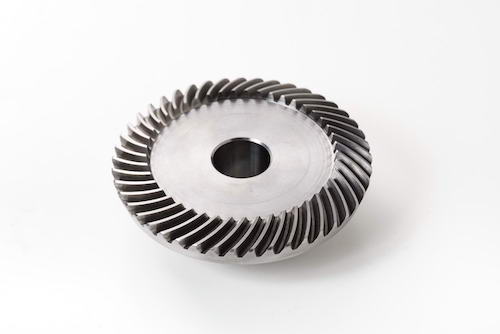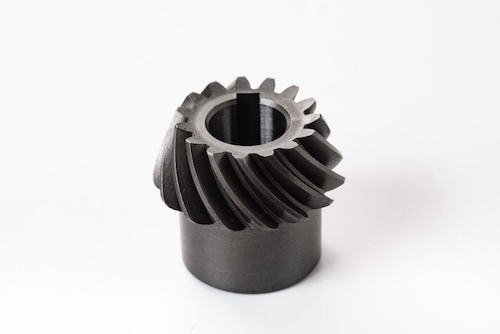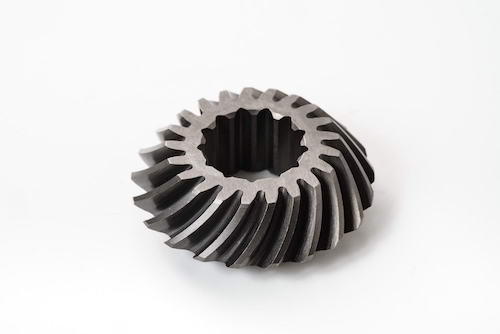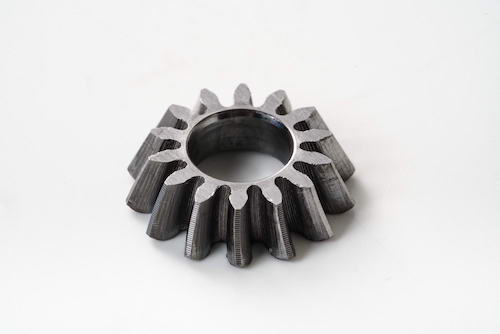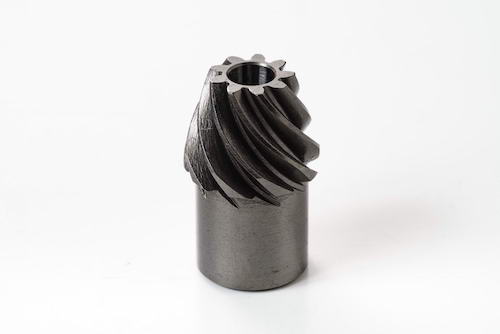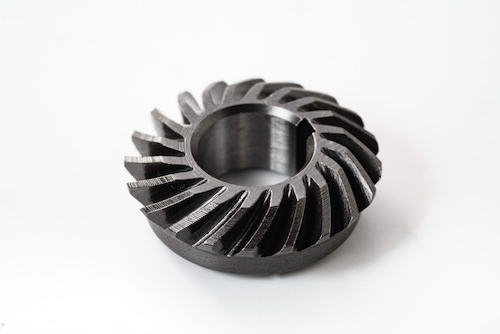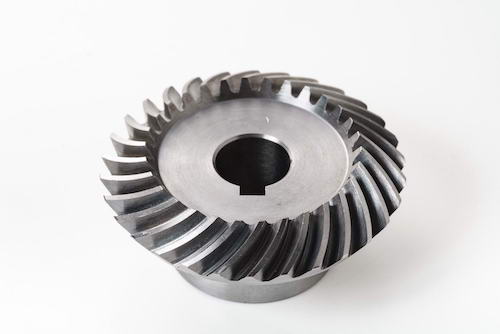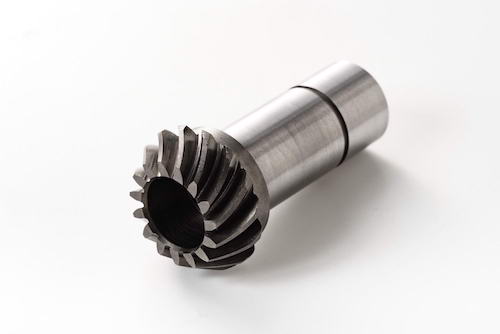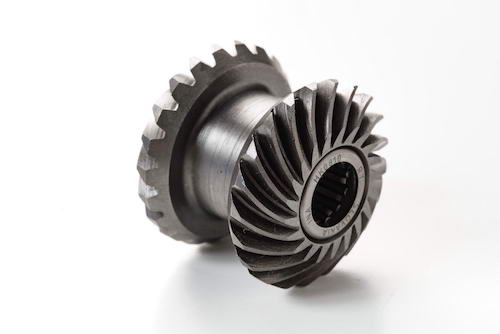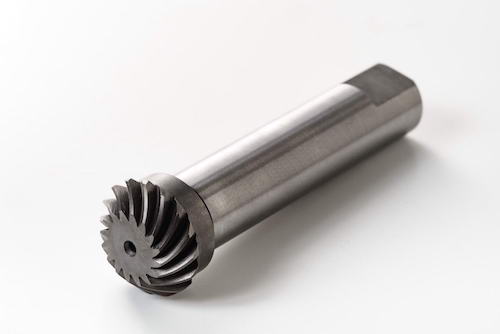Custom Spiral Bevel & Miter Gears
Narutaki Industries' Gear Division specializes in manufacturing small gears, primarily focusing on spiral bevel gears. We can accommodate a wide array of applications, ranging from prototypes and small batches during the research and development phase to large-scale production. Our expertise extends to spiral bevel gear cutting using a 5-axis multitasking machine, enabling us to achieve superior precision. Additionally, we provide other machined products such as flat and helical gears.
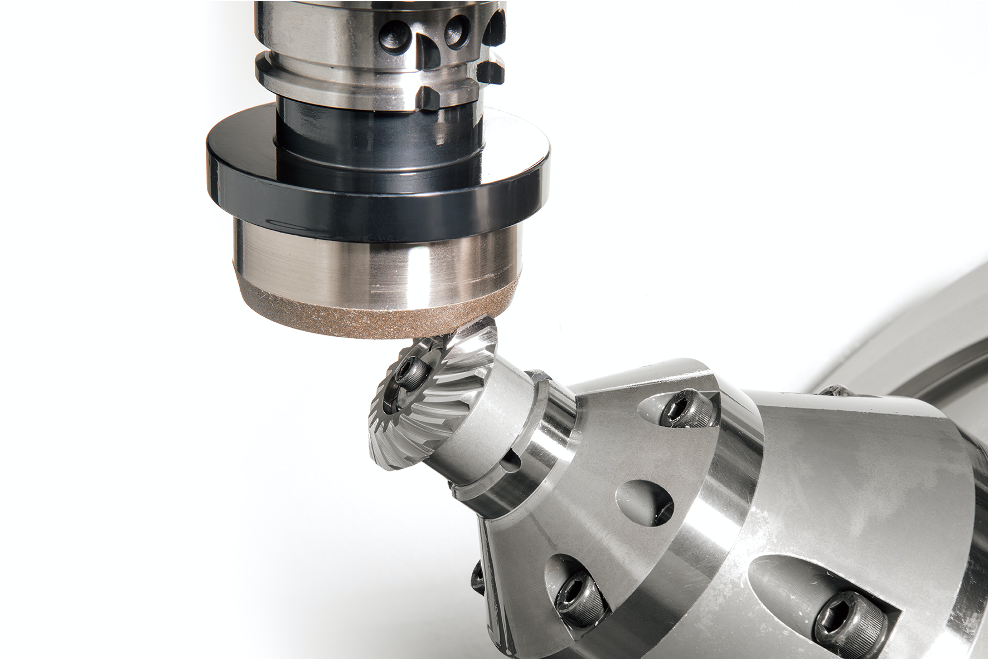
Available Specifications
| Item | Specifications | |
|---|---|---|
| Number of Modules (max.) | 4 | |
| Diametral Pitch (min.) | 6.5 | |
| Outer Diameter (max.) | φ100 | |
| Machining Material | Carbon Steel | S45C(AISI 1045) |
| Alloy Steel | SCM415(AISI 4115), SCM420(AISI 4118), SCM435(AISI 4135), SCM440(AISI 4140), SNCM420(AISI 4320) | |
| Stainless Steel | SUS304(AISI 304) | |
| Machining Equipment | 5-axis multi-tasking machine DMG Mori, NTX1000 | |
| Spiral Bevel Gear SBG-10×11 | ||
| CNC Cylindrical Grinder, E300G | ||
| NC grinding machine for spiral bevel gears (module: ~4, DP: 6.5~) | ||
Custom-made Product Examples
Alloy Steel
Module: 1.0
Module: 1.25
Module: 1.3
Module: 1.5
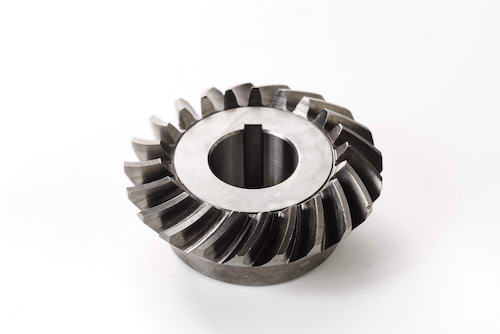
- Material: SCM415(AISI 4115)
- Module: 1.5
- DP: 16.9
- Number of teeth: 21
- Helix angle: 35°
DP: 18
Basics of Spiral Bevel Gears
What is Spiral Bevel Gears?
Spiral bevel gears feature a curved tooth pattern on a pitch cone along with a torsion angle. They offer smoother motion transmission compared to straight bevel gears or Zerol bevel gears (as explained below), resulting in significant noise and vibration reduction at high speeds (10 m/s or more).
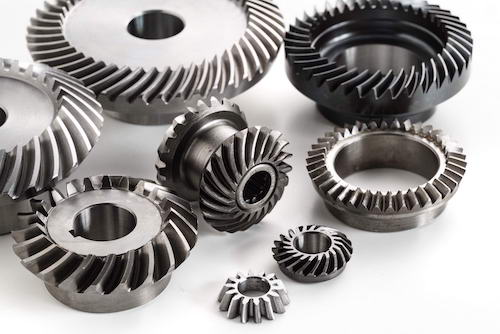
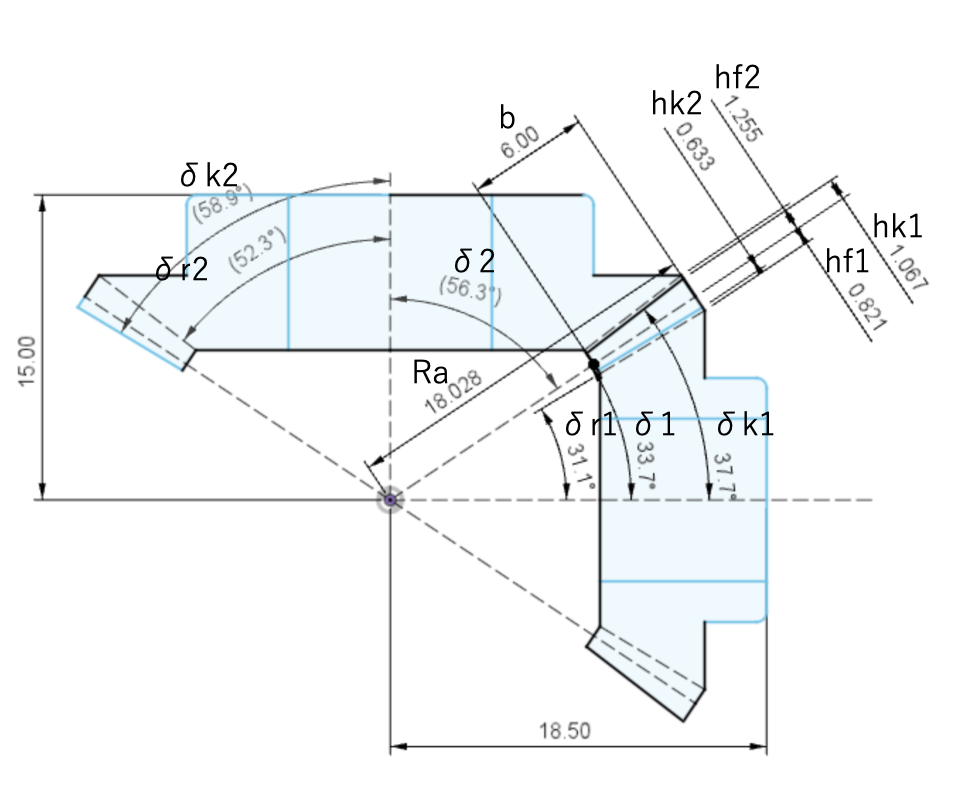
What makes Spiral Bevel Gears Unique?
In the case of spur gears, for instance, when cutting gears with a module of 1, you can utilize a hob (cutting tool) with a module of 1, regardless of the tooth ratio. However, when it comes to spiral bevel gears, the theoretical cutter diameter is determined by considering various factors, including the tooth ratio, tooth width, torsion angle, and gear module. The theoretical cutter diameter can vary significantly based on these specifications mentioned earlier.
In essence, even if you have numerous cutters, they may not suffice because the same module can yield different theoretical cutter diameters depending on the tooth ratio. This implies that a standardized approach is needed.
Currently, when cutting small modules like ours (2.5 modules or smaller), cutter diameters are standardized to some extent, such as 0.5 inch, 1.1 inch, 1.5 inch, 2 inch, and 3.5 inches. A standard cutter is selected to approximate the theoretical cutter diameter calculated based on the various specifications. For example, if the theoretical cutter diameter is 1.2 inches, you can choose either a 1.1 inch or 1.5 inch standard cutter.
Considering that standard cutters are further adjusted based on factors such as cutter No. (blade tilt angle) and point width (cutting edge width) in accordance with gear specifications, it becomes evident that a substantial quantity of cutters is still required.
Therefore, despite the theoretical complexity of spiral bevel gears, they represent an appealing choice for manufacturers due to their high degree of adaptability.
Uses of Spiral Bevel Gears
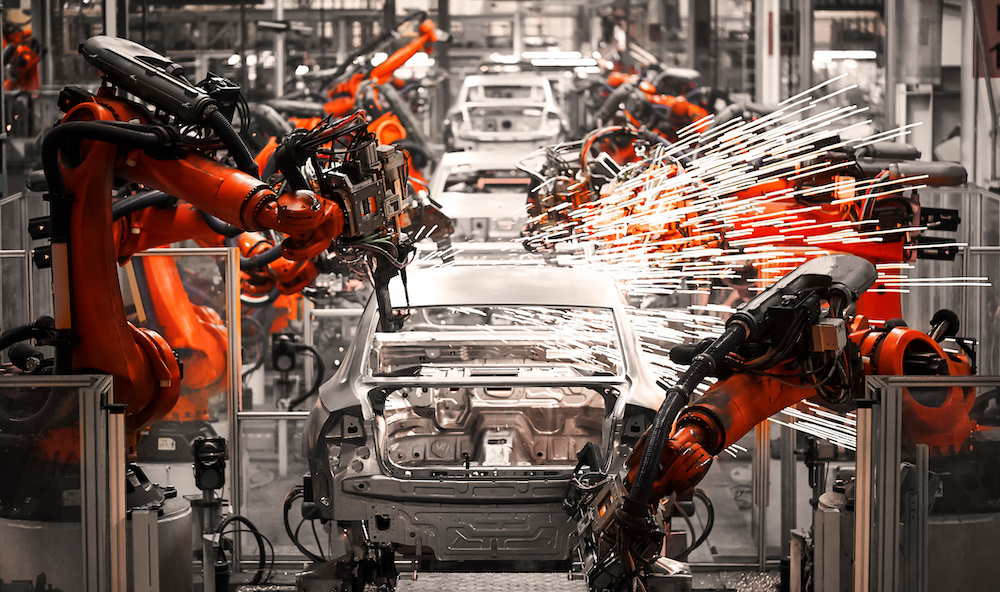
1. Automotive Industry
In the realm of automobiles, spiral bevel gears are pivotal in the differential system, ensuring drive wheels can rotate at different speeds during turns. Their smooth meshing attributes make them ideal for quieter operations. Additionally, they're incorporated in specific transmission setups and are fundamental in 4WD vehicles, facilitating balanced power distribution to both front and rear axles.
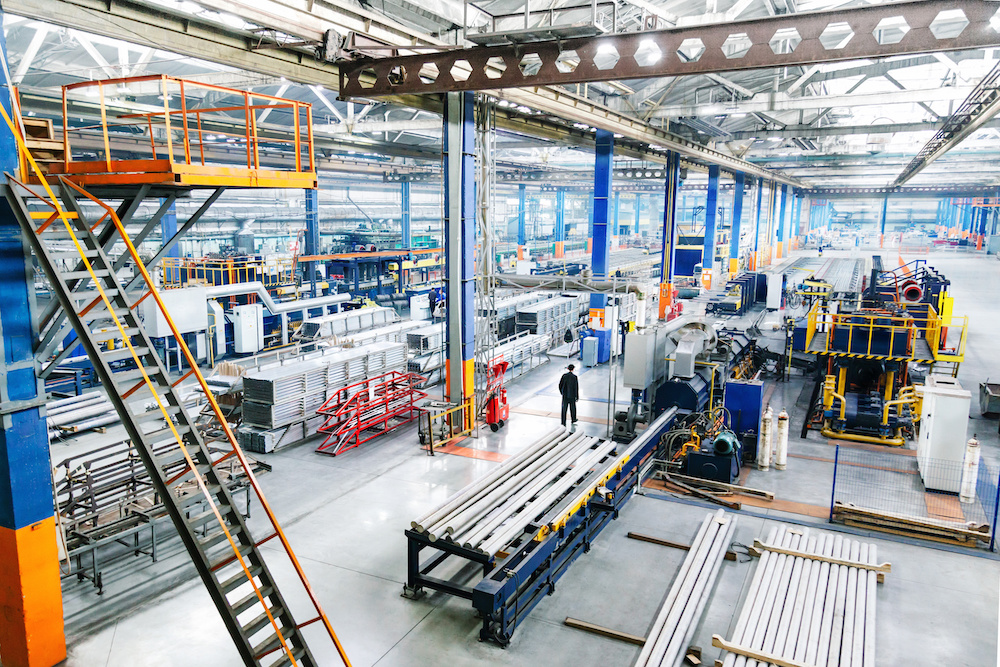
2. Industrial Equipment
Industrial machinery, especially those requiring power to be transferred at right angles, heavily relies on spiral bevel gears. They're a common sight in power tools like drills, where direction change is essential, and in conveyor systems, ensuring materials move smoothly across different levels.

3. Marine Industry
Marine vessels utilize spiral bevel gears in their propulsion mechanisms, transferring power efficiently from engines to propellers. Their precision also finds use in advanced navigation systems, allowing for accurate steering and movement in the vast marine environment.
Manufacturing Process
STEP 1: Material Preparation
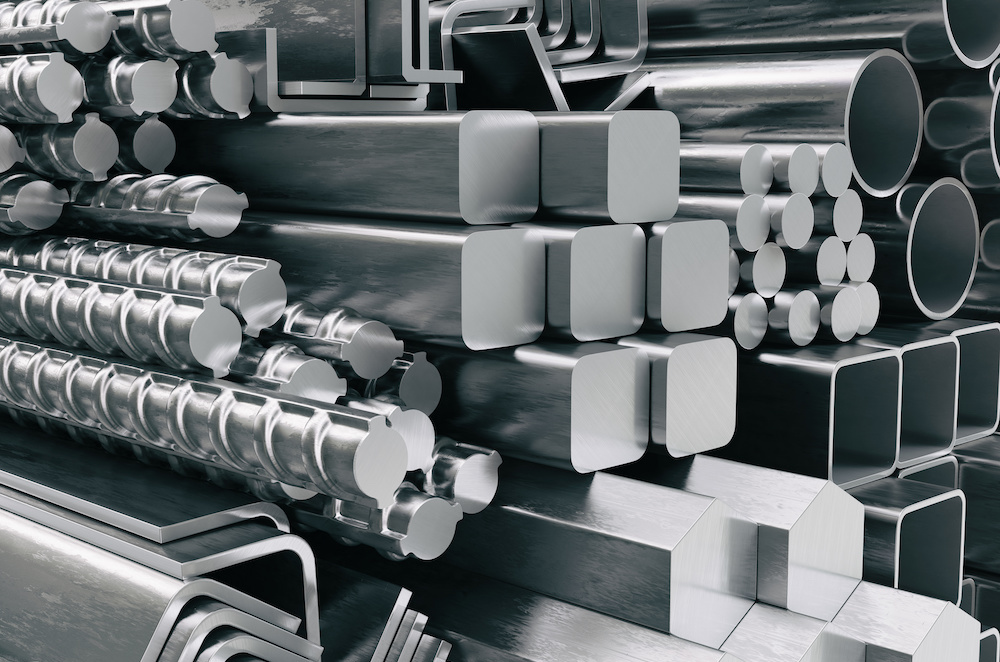
The appropriate material is selected based on desired gear properties, ensuring optimal strength and durability.
STEP 2: Cutting
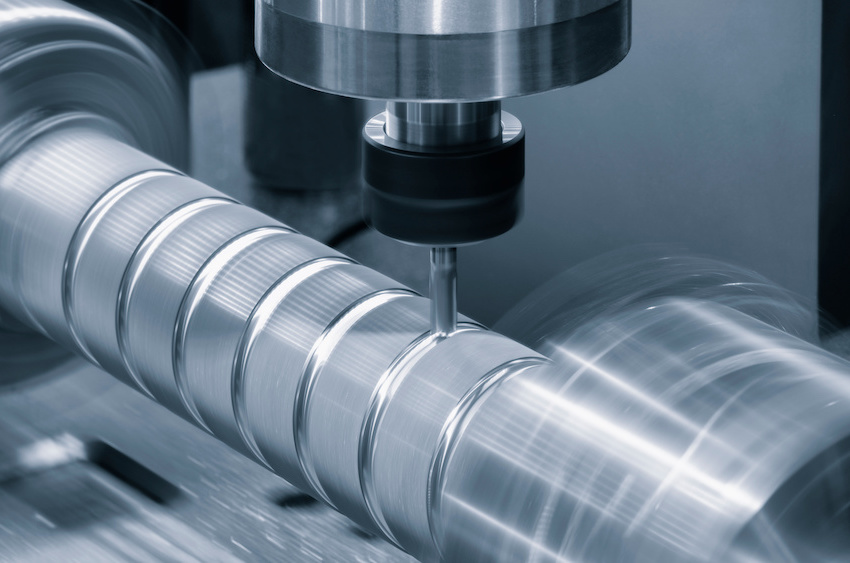
The chosen material is cut into manageable sizes, preparing it for subsequent processing.
STEP 3: Heat Treatment
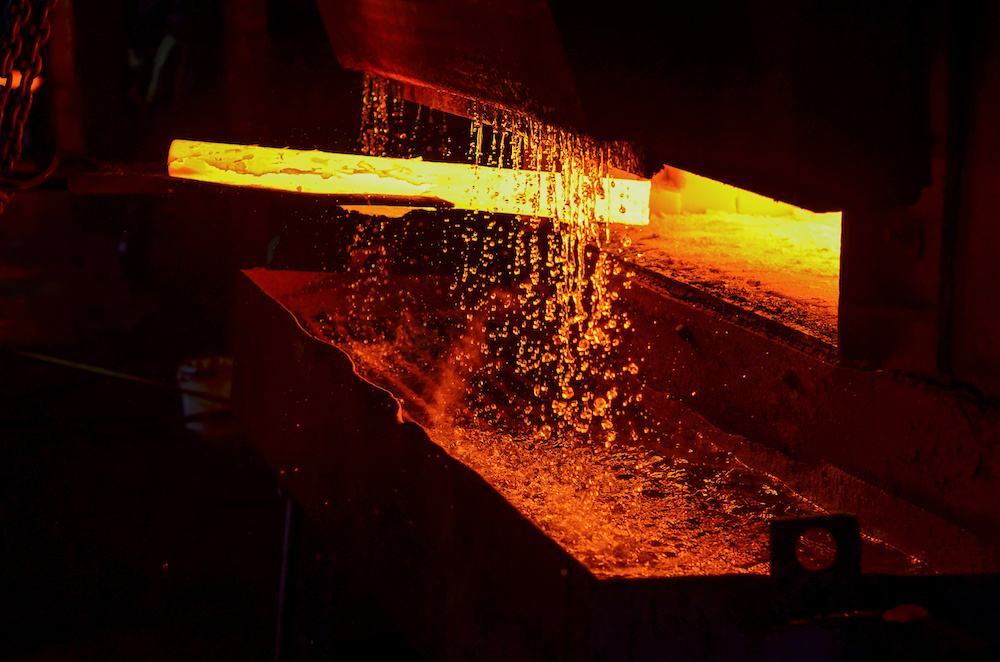
The cut pieces undergo heat treatment to enhance their mechanical properties, such as hardness and toughness.
STEP 4: Lathe Machining
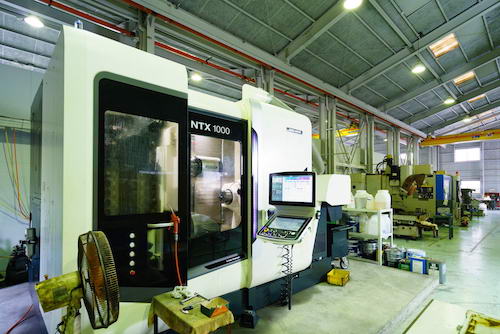
The heat-treated pieces are shaped on a lathe, ensuring symmetry and preparing them for detailed machining.
STEP 5: Gear Cutting
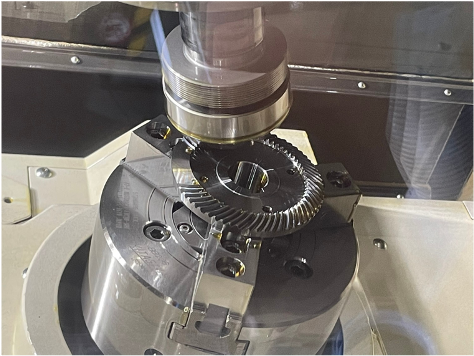
The teeth of the gear are formed using specialized gear cutting machines, creating the unique helical shape.
STEP 6: Broaching
Internal features, like keyways or splines, are created using a broaching process, which removes material with a toothed tool.
STEP 7: Carburizing with high frequency
The gear undergoes a carburizing process, enriched with carbon, and is then treated with high-frequency heat to harden its surface.
STEP 8: Shaft Grinding
The gear's shaft is finely ground to achieve precise dimensions, ensuring a perfect fit in its assembly.
STEP 9: Gear grinding

The gear teeth are finely ground using specialized equipment, ensuring smooth engagement and precise tooth profiles, enhancing the gear's operational performance.
STEP 10: Inspection
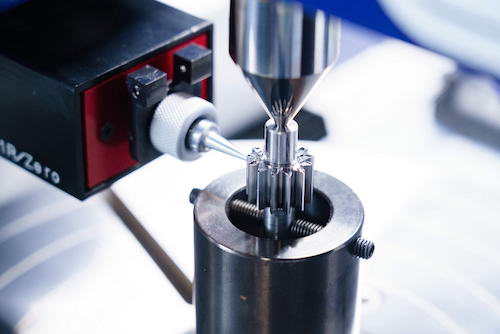
The final gear is rigorously inspected for quality and compliance with design specifications. Advanced tools and machines are used to measure dimensions, alignments, and other critical parameters to guarantee optimal performance in real-world applications.
FAQs about Spiral Bevel Gears
Q.1: What is the difference between Spiral/Straight Bevel Gears?
A.1: spiral bevel gears have curved teeth that are helical in shape, allowing for smoother and quieter operation due to gradual tooth engagement. This design also distributes the load over several teeth, providing better strength and durability. In contrast, straight bevel gears have straight teeth that engage all at once, leading to sudden load application and potentially noisier operation.
Q.2: What is the "Efficiency" of Spiral Bevel Gears?
A.2: The efficiency of spiral bevel gears typically ranges from 94% to 98%, depending on the design, lubrication, and load conditions. Their helical tooth design ensures smooth tooth engagement, reducing friction and energy losses, which contributes to their high efficiency.
Q.3: Are Spiral Bevel Gears bidirectional?
A.3: Yes, spiral bevel gears are bidirectional, meaning they can transmit power in both rotational directions. However, the performance characteristics, such as noise and vibration levels, might vary slightly depending on the direction of rotation and the specific design of the gear set.

